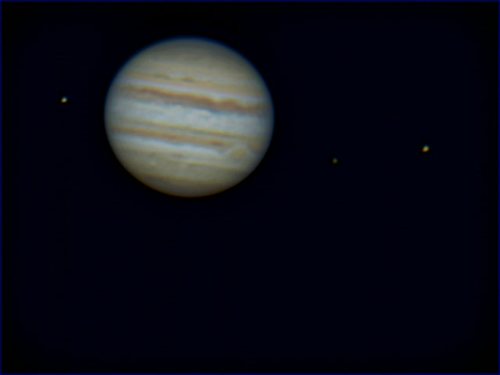 Just after midnight September 3 Eastern Daylight Time (EDT) or just before midnight September 2 for the rest of the United States, a Jupiter event begins that any amateur astronomer with a telescope and a clear sky overhead can see. The king of planets will appear without a visible satellite for nearly 2 hours. You won’t be able to see such a sight again for a decade.
Just after midnight September 3 Eastern Daylight Time (EDT) or just before midnight September 2 for the rest of the United States, a Jupiter event begins that any amateur astronomer with a telescope and a clear sky overhead can see. The king of planets will appear without a visible satellite for nearly 2 hours. You won’t be able to see such a sight again for a decade.
The last of Jupiter’s four major satellites to disappear, Ganymede, begins to transit (move in front of Jupiter’s disk) at 12:43 a.m. EDT (9:43 p.m. PDT). Then it’s just Jupiter until 2:29 a.m. EDT (11:29 a.m. PDT) when Io comes out of its eclipse by Jupiter’s shadow.
Observers with large telescopes will be able to follow Ganymede and Europa as they cross in front of Jupiter’s cloud tops. If you can’t spot them, look for their dark shadows moving slowly across the planet.
This is an event worth setting your clock for. We won’t see Jupiter without a visible satellite again until 2019.
Use Astronomy.com's interactive star chart to observe and follow this exciting event.
See more Jupiter images, like the one above by Frank Araiza, in our Online Reader Gallery.